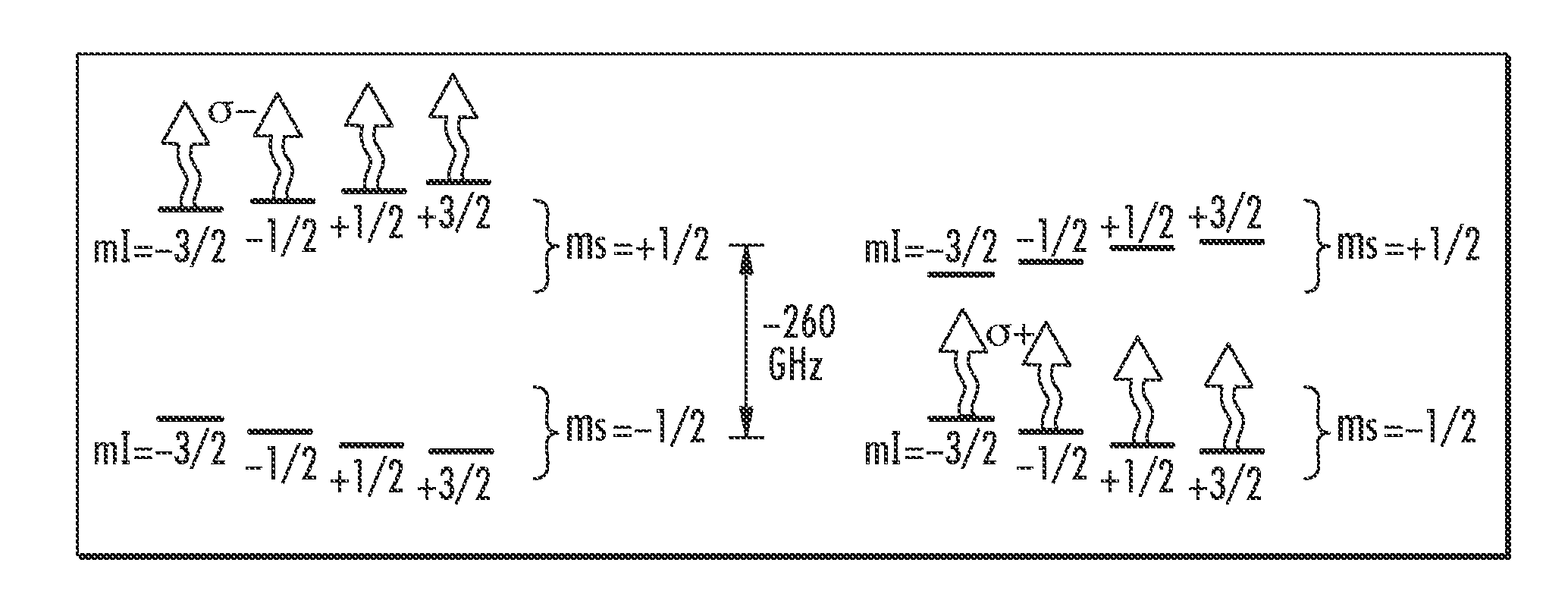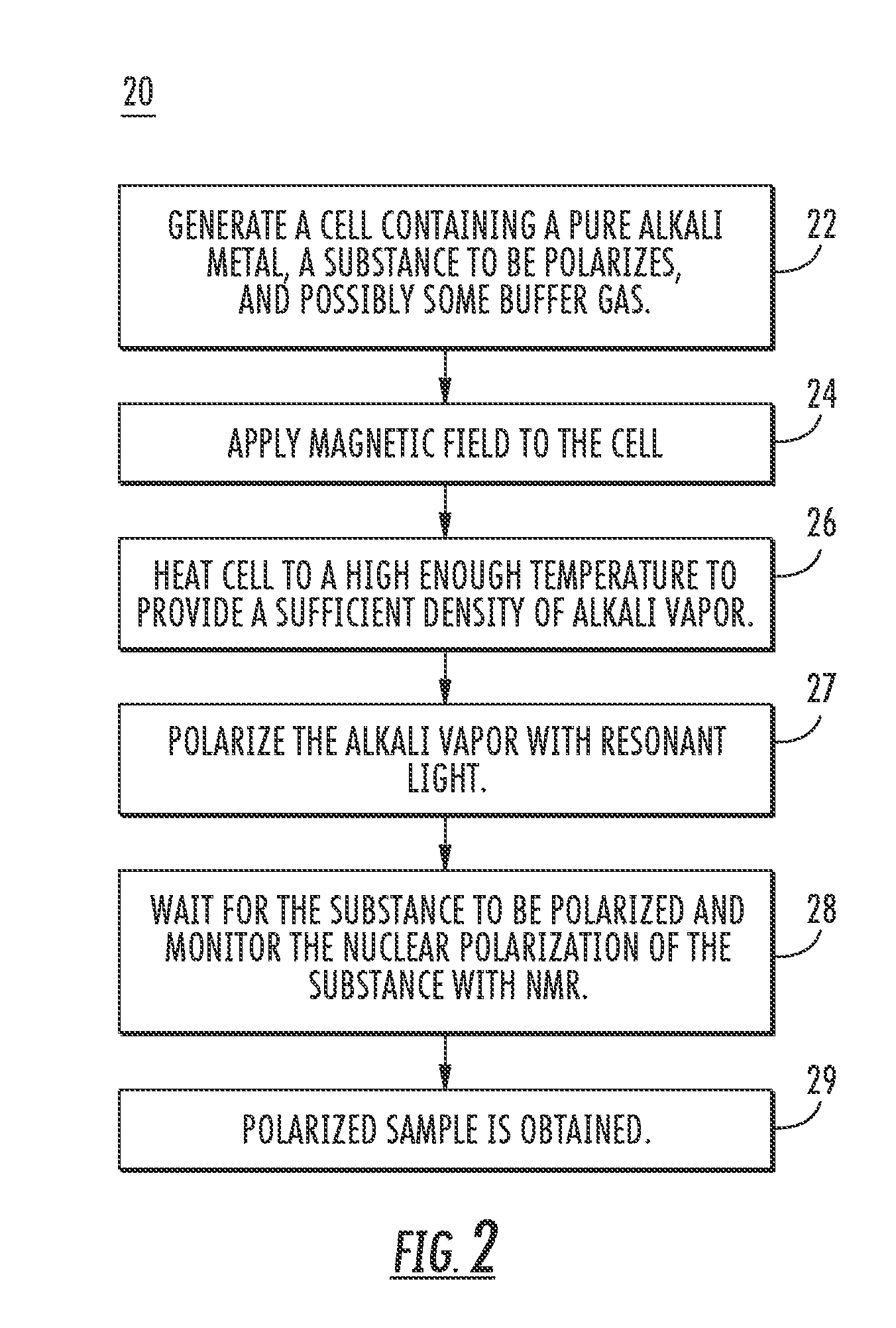Polarizing nuclei solids via spin transfer from an optically-pumped alkali vapor
a technology of optically pumped alkali vapor and nuclei solids, which is applied in the direction of material analysis, using reradiation, instruments, etc., can solve the problems of unnecessary magnetic field cycling, and achieve high vapor pressure, low melting point, and increase the rate of spin transfer
- Summary
- Abstract
- Description
- Claims
- Application Information
AI Technical Summary
Benefits of technology
Problems solved by technology
Method used
Image
Examples
Embodiment Construction
[0026]Reference will now be made in greater detail to a preferred embodiment of the invention, an example of which is illustrated in the accompanying drawings. Wherever possible, the same reference numerals will be used throughout the drawings and the description to refer to the same or like parts.
[0027]FIG. 2 is a flow diagram of a method for obtaining a polarized compound 20 in accordance with the teachings of the present invention. In block 22, cells are generated which contain a pure alkali metal, a substance to be polarized, and possibly a buffer gas intended to facilitate optical pumping. The substance to be polarized can be a salt which contains the same or a different alkali metal than the pure alkali metal which is in the cell. Example alkali salts include NaCl, CsH, CsCl, and CsF. Alternatively, the substance to be polarized can be an element or compound which does not contain alkali atoms, for example silicon. Preferably, the substance to be polarized is a solid. In one e...
PUM
 Login to View More
Login to View More Abstract
Description
Claims
Application Information
 Login to View More
Login to View More - R&D
- Intellectual Property
- Life Sciences
- Materials
- Tech Scout
- Unparalleled Data Quality
- Higher Quality Content
- 60% Fewer Hallucinations
Browse by: Latest US Patents, China's latest patents, Technical Efficacy Thesaurus, Application Domain, Technology Topic, Popular Technical Reports.
© 2025 PatSnap. All rights reserved.Legal|Privacy policy|Modern Slavery Act Transparency Statement|Sitemap|About US| Contact US: help@patsnap.com



